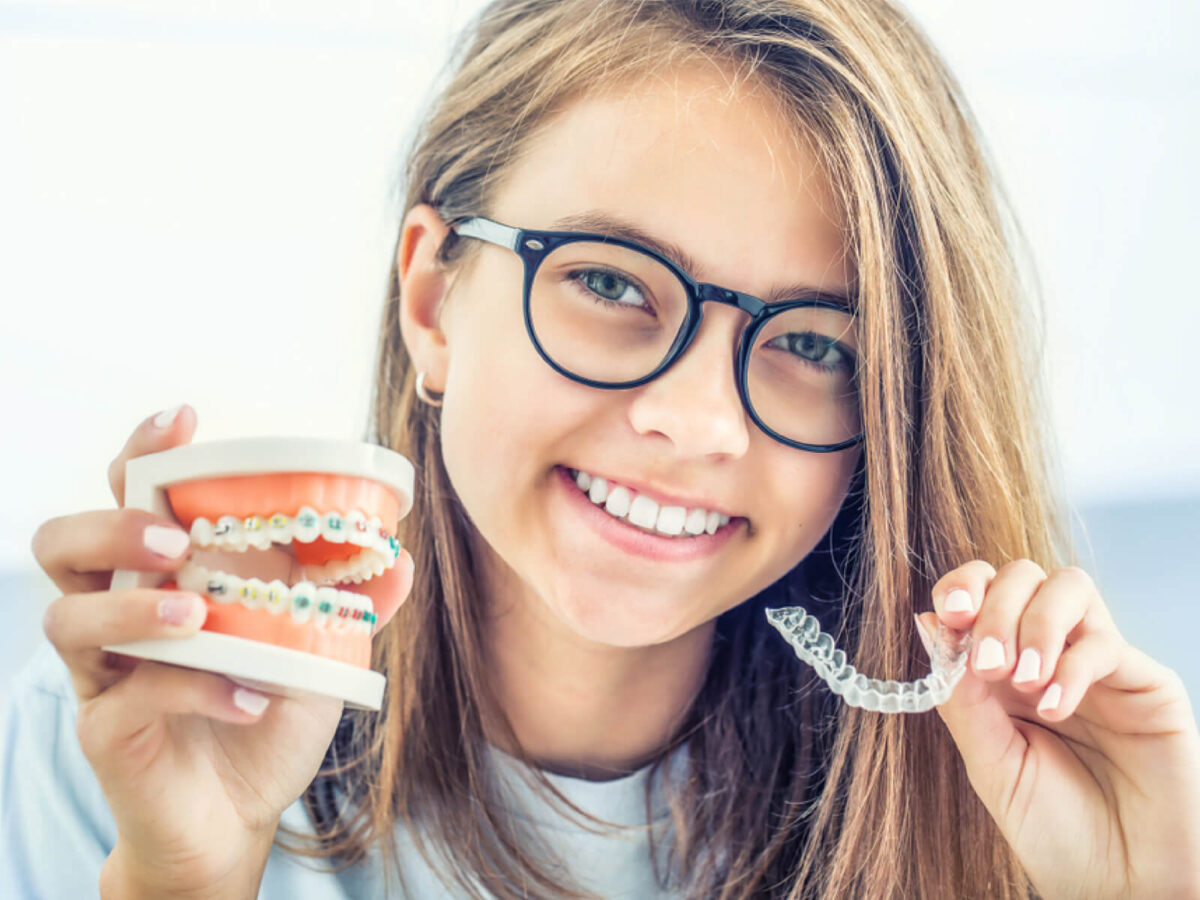Blog
Dental hygiene tips for healthy teeth & gums

Benefits of Choosing Clear Aligners Over Traditional Braces
Many people desire a straight and beautiful smile, and advances in orthodontic technology have provided alternatives to traditional braces. Clear aligners, such as Invisalign, have gained popularity due to their discreet appearance and comfort. This blog explores the advantages of using clear aligners over traditional braces, highlighting their transformative impact on orthodontic treatment.
- Visual Appeal and Discreet Appearance:
Clear aligners offer significant aesthetic benefits. Unlike traditional braces with metal brackets and wires, clear aligners are nearly invisible. Made from clear, medical-grade plastic, they allow individuals to undergo orthodontic treatment discreetly, appealing to both teenagers and adults who might feel self-conscious about wearing traditional braces.
- Removability for Ease:
The removability of clear aligners provides a convenience that traditional braces can’t match. Wearers can remove their aligners for eating, brushing, and flossing, simplifying dental hygiene and eliminating the dietary restrictions often associated with traditional braces.
- Greater Comfort and Less Irritation:
Clear aligners lack metal components, making orthodontic treatment more comfortable. Traditional braces can cause irritation or discomfort due to contact with soft tissues in the mouth. Clear aligners, being smooth and custom-fit, eliminate these issues.
- Improved Dental Hygiene:
Maintaining proper dental hygiene is crucial during orthodontic treatment. Traditional braces can complicate cleaning, as food particles may get trapped. Clear aligners, being removable, allow patients to thoroughly clean and floss their teeth, reducing the risk of oral health issues.
- No Dietary Limitations:
Traditional braces come with dietary restrictions to prevent damage to the brackets and wires. Clear aligner users can continue enjoying their favorite foods without such limitations.
- Fewer Office Appointments and Time Commitment:
Treatment with clear aligners typically requires fewer in-office visits than traditional braces. The frequency of appointments varies, but clear aligners generally need less adjustment and maintenance.
- Predictable and Customized Treatment:
Clear aligners use advanced technology to create a personalized treatment plan. CAD technology maps out tooth movement, providing a clear roadmap for treatment. This predictability allows individuals to see anticipated results and understand their orthodontic journey.
- Suitable for Athletes and Musicians:
Traditional braces can cause concerns for those engaged in sports or playing musical instruments due to the potential for injury or discomfort. Clear aligners, being smooth and removable, offer a safer and more comfortable option for active individuals.
- Less Impact on Speech:
Traditional braces can initially affect speech patterns due to the presence of brackets and wires. Clear aligners, being smooth and custom-fit, have a lesser impact on speech, and most people adapt quickly, making them a discreet and comfortable choice.
- Gradual Tooth Movement with Minimal Discomfort:
Clear aligners facilitate gradual tooth movement while minimizing discomfort. Although some discomfort is expected in orthodontic treatment, the lack of metal components in clear aligners reduces overall discomfort.
Conclusion:
Clear aligners represent an innovative and patient-friendly approach to orthodontic treatment. With their aesthetic appeal, removability, comfort, and ease of dental hygiene, clear aligners offer a more adaptable and convenient option for achieving a straight and beautiful smile.
